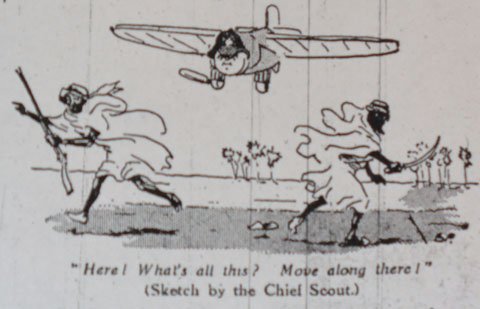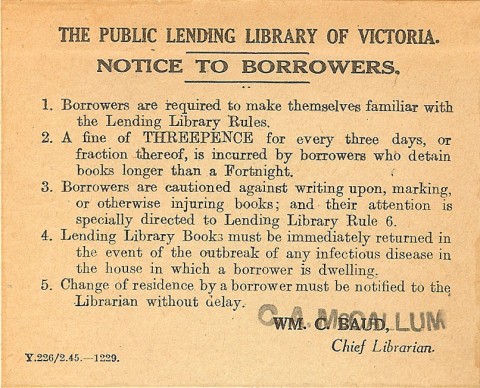[Cross-posted at Society for Military History Blog.]
The current conflict in Gaza has attracted much media attention for the so-called Twitter war being fought between the IDF and Hamas, or, more precisely, between the @IDFSpokesperson and @AlqassamBrigade accounts and their respective followers. Insults are traded back and forth, photos and videos of rocket attacks and air strikes and their purported results (sometimes quite horrific, be warned) shared and retweeted many times over, bloggers take up virtual arms on behalf of one side or the other. @IDFSpokesperson tweets a graphic claiming that ‘Hamas’ goal is to kill civilians’; @AlqassamBrigade one claiming ‘In Children’s Day: Israel killed 26 Palestinian children!’ This present form of propaganda war is sometimes (not always) presented as something new. Certainly the speed of communication and the ease by which it can be accessed by anyone who is interested is remarkable, but nothing ever looks completely new to a historian.
During the Blitz, for example, British newspapers and magazines were the medium by which both British and German propaganda messages regarding the mutual bombing war were passed to readers so that they could judge for themselves. In September 1940, The Listener noted that ‘German broadcasts continue to claim that only military objectives are being attacked’ by the Luftwaffe.1 By contrast, the Zeesen radio station was reported to have claimed that:
British pilots have received instructions to avoid carefully any kind of military objective and to concentrate instead on terrorising the German civilian population.2
As it was broadcast in English, this message was clearly directed at the British people themselves. Normally only those who owned a radio and were listening in on the right frequency at the right time would have received it, perhaps along with a few others by word of mouth. By reprinting it, The Listener was sharing it with a much larger audience (circulation was around 50,000 in 1939 but had risen to 129,000 by 1945). By reprinting it without editorial comment, it was trusting its readers to draw the right conclusions.
Of course, they had already been told, over and over, that indiscriminate bombing was Germany’s game and Germany’s alone. For example, according to Hugh Dalton, the Minister of Economic Warfare, the RAF sought only to bomb ‘industrial targets’:
I would rather see the Leuna synthetic oil plant a smoking heap of ruins than destroy every single dwelling-house in Berlin […] Nothing indiscriminate is any good in this war. You want to put your bombs where they will do most harm to the enemy’s war effort.3
Bomber Command was indeed attempting (unsuccessfully) the precision bombing of industrial targets at this stage of the war, whereas the Luftwaffe by and large was not, and this was a message that official British communiques consistently attempted to convey (and not only by words alone, as a map showing Bomber Command targets across Germany demonstrates).
But Dalton also noted that ‘you are bound to inflict civilian casualties and influence German morale’. He did this in part to assuage the often vocal segments of public opinion demanding reprisal raids against German cities in reply to the Blitz. This was another aspect of the social war: the British public were not merely passive consumers of propaganda, but read their own meanings into it and attempted to persuade others to accept them. That is, they too participated in creating propaganda. Sometimes this was quite explicit, as when in October 1940 a person unknown plastered buildings with large posters declaring ‘BOMB BERLIN AND SAVE LONDON’. But letters columns in the daily press were the usual ground over which this part of the social war was fought. On 27 September alone, for example, the Yorkshire Post published six letters on the question of bombing reprisals: five for and one against. N. Cunningham argued that
It is high time we stopped all this stupid talk of ‘No Reprisals’ […] The only way to stop this senseless indiscriminate bombing is by returning blow for blow or even two blows for every one of theirs, and to hit back harder than these murderous Nazis.4
By contrast, R. Arnott believed:
We must rid ourselves of the ghastly idea of winning this war over the bodies of Berlin babies.
A year ago we set out on this crusade in order to crush evil things and, inter alia, to preserve decency in Europe. Those, I take it, remain our aims, and I am quite unable, try as I might, to reconcile the mass murder of women and children with the preservation of decency.2
A few days later, A. E. Firth rebuked Arnott, asking ‘why should British towns be destroyed without reprisals being taken’?5 Firth instead advocated warning Germans that they were about to be attacked, so that they could ‘clear out their women and children before the destruction of their towns took place’.2 This idea of reprisals after notice was not part of the official public discourse on the bombing war; it was strategy from below, folk strategy.
This sort of relatively rapid exchange of strongly-held opinions couched in emotive terms certainly has a familiar feel to it. The dividing line between combatant and non-combatant in social war is blurred: unofficial propaganda draws upon and remakes official propaganda for its own ends. This possibility was and is inherent in the rise of mass communications, though it has not always been realised. But just as historians are apt to see precedents for the present day, we also see differences between now and then. For one thing, in 1940 it was effectively impossible for British civilians to communicate with German ones, or vice versa: their debates were national, at best. Now Palestinians and Israelis — and everyone else — can talk directly to (or past) each other on the Gaza war, perhaps with the aid of Google Translate. For another, in 1940 official propaganda did not draw on the unofficial kind. Now @AlqassamBrigade and @IDFSpokesperson share photos of alleged attacks posted on Twitter by ordinary people. For yet another, in 1940 the debates in newspaper columns unfolded over days and weeks. Now the social war moves almost as fast as the real war does. A real war that, it should not be forgotten, claims real lives regardless of what happens online.
![]() This work is licensed under a Creative Commons Attribution-NonCommercial-NoDerivatives 4.0 International License.
Permissions beyond the scope of this license may be available at http://airminded.org/copyright/.
This work is licensed under a Creative Commons Attribution-NonCommercial-NoDerivatives 4.0 International License.
Permissions beyond the scope of this license may be available at http://airminded.org/copyright/.






It’s interesting to consider that even an overwhelming military defeat of Hamas could nonetheless be a Hamas “victory”, because of effects on public opinion towards Israel globally, and towards Fatah among Palestinians.
In fact, you could argue that, from the Hamas point of view, the war on the ground is the sideshow and the “twitter war” is the main event.
Just musing!
Quite an interesting episode of The Moral Maze on BBC Radio 4 yesterday evening, discussing Israel and Palestine. I thought the witnesses, all academics, had something of value to say while the panelists floundered around.
This is an interesting piece of propaganda. My first thought was that it is pathetic. That nobody, even if previously committed, was going to be persuaded that British bombers had orders to ‘carefully avoid’ military targets?
Against that, presumably the reasoning was to encourage the belief that the British ruling elite wanted war purely for its own sake, rather than as a means to an end. So the longer that it could be perpetuated the better. That reading would make the British people in 1940 the passive victims of a British ‘military industrial complex’, in much the same way – as has been alleged – young Americans and the Vietnamese were the victims of a US ‘military industrial complex’ in the 1960s. This fits in the German viewpoint in 1940, after the fall of France, that the war in the west was over and only the incomprehensible intransigence of the British leadership kept it going.
Jason:
Yes, the parameters for victory are very different to the real war. A piece went up at The Conversation today discussing the Twitter war from a social media analyst’s perspective, comparing followers, hashtags, etc. @IDFSpokesperson seems to be winning on the basic metrics, though you’d really need to go deeper and look at retweets and sharing of images and so on.
That link also displays a fantastic German propaganda leaflet from 1944, showing London’s destruction via V-1 attack, including Tower Bridge in flames. That’s another form of propaganda I didn’t discuss here, though I’m not sure how social it is. Maybe if people showed others the leaflets they’d found, or talked about them; but that form of sharing is inherent in any form of propaganda.
Neil:
I couldn’t find out what actual station(s) transmitted from Zeesen; though apparently it featured Lord Haw-Haw early on in the war, at least. The Germans did indeed try to incite class warfare in their propaganda broadcasts, as you suggest; one of their ‘black’ stations was called Workers’ Challenge which I think was supposedly a renegade socialist outfit transmitting from inside Britain; the New British Broadcasting Service was similarly fake and also seems to have tried to convince its listeners that the British upper classes were their real enemy, not Germany. You can listen to a few minutes’ worth of NBBS on Youtube (the first part may be Workers’ Challenge, but it could be NBBS too).
Pingback: Media blitz « geographical imaginations
Pingback: Cause and effect in British air policy discourse